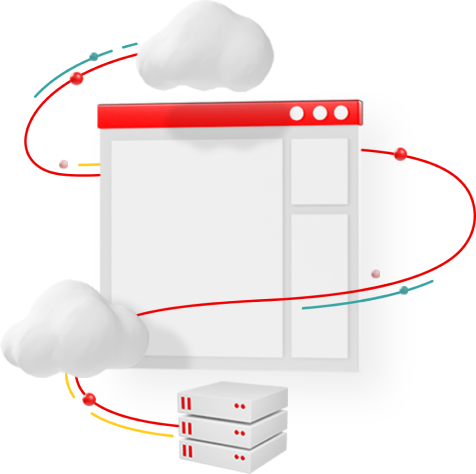Compute migration between nodes is a crucial aspect of managing virtual machine instances in cloud environments.
-
Cold Migration (Non-Live Migration):
- Involves shutting down a running instance before migrating it from the source Compute node to the destination Compute node.
- Results in some downtime for the instance.
- The migrated instance maintains access to the same volumes and IP addresses.
-
Live Migration:
- Involves moving the instance from the source Compute node to the destination Compute node without shutting it down.
- Ensures state consistency during migration.
- No downtime for the instance.
- Live migration is particularly useful for workload rebalancing, maintenance, and avoiding hot spots.
-
Use Cases for Migration:
-
Compute Node Maintenance:
- Temporarily take a Compute node out of service for hardware maintenance, kernel upgrades, or software updates.
-
Failing Compute Node:
- Migrate instances from a failing Compute node to a healthy one.
-
Failed Compute Nodes:
- Evacuate instances from a failed Compute node by rebuilding them on another node.
-
Workload Rebalancing:
- Distribute instances across Compute nodes to optimize resource utilization.
-
Compute Node Maintenance:
Compute Management
During live migration, managing compute resources (CPU and memory) is essential for a seamless transition. Let's explore how it works:
-
Memory Transfer:
- The VM's memory pages are copied from the source node to the destination node.
- This process occurs in two stages:
- Pre-Copy: Initially, memory pages are transferred while the VM continues running.
- Stop-and-Copy: The VM is briefly paused, and remaining memory changes are copied.
-
CPU State:
- The VM's CPU state (registers, execution context) is also transferred.
- The destination node resumes execution from where the source node left off.
-
Network Connectivity:
- Network state (MAC address, IP configuration) is maintained during migration.
- Seamless connectivity ensures uninterrupted communication.
-
Downtime Minimization:
- Live migration aims for zero downtime by overlapping memory transfer and VM execution.
- The final stop-and-copy phase has minimal impact on application availability.
Memory Management
During live migration, memory handling is a critical aspect. Memory copy is handled in the following manner.
-
Memory Pre-Copy:
- Initially, the source node starts copying memory pages to the destination node.
- This process continues iteratively until the memory changes are minimal.
- The instance remains running on the source node during this phase.
-
Stop-and-Copy (Post-Copy):
- At a certain point, the instance is paused briefly.
- The remaining memory pages are copied from the source to the destination node.
- The instance resumes execution on the destination node.
-
Dirty Page Tracking:
- To minimize downtime, the hypervisor tracks memory pages that change during pre-copy.
- Only the modified pages are transferred during the stop-and-copy phase.
-
Performance Considerations:
- Live migration impacts performance due to memory copying and network traffic.
- Balancing between migration speed and downtime is crucial.
Storage Management
During live migration, storage management is crucial to ensuring seamless transitions. Storage is handled in the following manner.
-
Shared Storage:
- Live migration typically involves VMs using shared storage.
- These storage resources are often SAN LUNs (Storage Area Network Logical Unit Numbers) managed by the Failover Clustering service.
- Each VM doesn't have its own dedicated LUN; instead, multiple VMs share the same storage volume.
-
Storage Transfer:
- When a live migration occurs, the VM's memory, storage, and network connectivity are transferred from the original host to the destination.
- The entire virtual machine, including virtual hard disks (VHDs) and configuration information, can be moved.
-
Zero Downtime:
- The beauty of live migration lies in its ability to perform these storage transfers without service interruption or downtime.
- This ensures continuous operation and data integrity.
Advantages of Live Migration
- Live migration ensures seamless transitions while preserving the instance’s state.
- Live migration simplifies hardware maintenance, disaster recovery, and workload balancing, making it a powerful tool for managing virtualized environments
- Live migration optimizes resource utilization, supports maintenance, and enhances workload flexibility in virtualized environments.
- Live migration offers smoother transitions, better resource utilization, and minimal downtime compared to cold migration
-
Downtime Minimization:
- Live Migration: Minimal to zero downtime.
- Cold Migration: Requires instance shutdown, resulting in downtime.
-
Seamless Transition:
- Live Migration: VM state is preserved during migration.
- Cold Migration: Requires manual reconfiguration after migration.
-
Resource Optimization:
- Live Migration: Balances workloads across nodes.
- Cold Migration: Doesn't optimize resource usage.
-
Maintenance Flexibility:
- Live Migration: Ideal for hardware maintenance or updates.
- Cold Migration: Better suited for planned migrations.
-
Application Continuity:
- Live Migration: Ensures uninterrupted service.
- Cold Migration: Service interruption during migration.
VMware vMotion vs Hyper-V Migration
-
VMware vMotion:
- Part of VMware vSphere.
- Supports seamless real-time migration to balance server loads.
- Moves VMs with zero downtime.
- Can move eight VMs concurrently.
- Demonstrated superior speed and stability in tests¹.
-
Hyper-V Live Migration:
- Part of Microsoft Hyper-V.
- Also supports migrations with zero downtime.
- Limited to one live migration at a time (source or destination).
- Larger numbers of VMs take longer to move.
- VMware vMotion is up to 5.4 times faster in certain scenarios¹.
Secure migration is configured by the cloud platform, and shared SSH keys facilitate communication during the process.
Ref: https://docs.redhat.com/en/documentation/red_hat_openstack_platform/13/html/instances_and_images_guide/migrating-virtual-machines-between-compute-nodes-osp.
Ref: https://www.vmware.com/content/dam/digitalmarketing/vmware/en/pdf/products/vsphere/vmware-vmotion-verus-live-migration.pdf



Top comments (0)